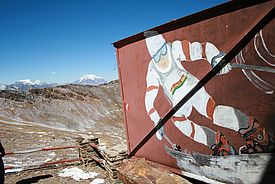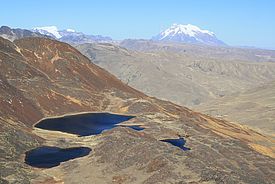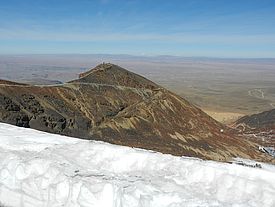29.02.2016 | News
There's certainly no shortage of reviews on the interactive travel website tripadvisor.com: "Breathtaking scenery", "An unforgettable trip", "Going higher than 5,000 meters was an amazing experience!" So, what fired these visitors' enthusiasm? The site of a melted glacier and former ski run at Chacaltaya, in the Bolivian Andes. A team of Swiss researchers has taken an interest in this example of a tourist attraction's successful adaptation in the wake of climate change.
Although Bolivia's little Chacaltaya glacier was just one victim of global warming (other Andean glaciers have also disappeared), it was iconic, because since 1939 it had been the location of the world's highest ski run, at an altitude of 5,400 meters. In 1987, skiing became virtually impossible there, and by 2009 the glacier had completely vanished. “Due to the long dry season and limited summer precipitation in the subtropical Andes, global warming is having a massive impact on the region's glaciers, causing them to melt faster than those in the Alps”, explains Swiss climatologist Martine Rebetez.
A team of researchers from the University of Neuchâtel's Institute of Geography and the Swiss Federal Institute for Forest, Snow and Landscape Research (WSL) has studied how losing both the glacier and skiing have affected Chacaltaya's appeal. Their results show that, although the glacier and ski run disappeared around a decade ago, tourists still flock to Chacaltaya, albeit for different reasons. Raoul Kaenzig, main author of the study, comments: “The spectacular view from the summit, quick and easy access from La Paz, the chance to acclimatize to high altitude, and - for some visitors - to see snow for the first time, continue to draw visitors from around the world.”
How to turn a vanished tourist attraction into an asset
Interviews conducted at Chacaltaya show that tourism industry players share the same determination to find solutions to keep the site alive. However, they do not all see eye to eye on its development. The authorities and university researchers in tourism suggested drawing attention to the changes that have occurred, letting the public know and making this a reason to visit. This idea is supported by mountain guides and members of the Andean Club, but has not yet won over local tourism agencies, which still prefer to display images of the world's highest ski run.
Mountain guides are especially inventive and adaptable
The example of Chacaltaya shows that a tourist site can retain its appeal after losing its main raison d’être, provided that it is multifunctional and able to adapt. The research findings also showed that, of all the parties affected, mountain guides are the first to adapt to new situations created by climate change. In the Bolivian Andes, they know how to deal not only with glacier disappearance, but also with new dangers threatening mountain activities. Above all, they are good at seizing fresh opportunities and feeding off tourists' expectations, firstly by offering them activities unrelated to snow and ice, such as climbing and mountain-biking, and secondly by extending the tourist season. Although until recently guides only worked from June to August, they are increasingly working year-round, offering a wide range of activities to meet the demands of their new customers.
Contact ¶
Contact ¶
Dr. Raoul Kaenzig
Tel. +41 76 408 55 86
raoul.kaenzig (at) unine.ch



